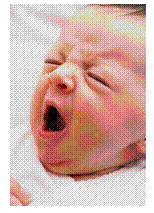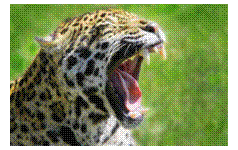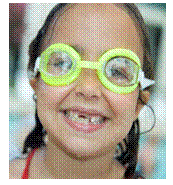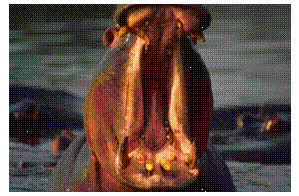Mouth and Teeth Terms
Your child’s mouth area, along with the mid-face region, undergoes constant change from birth to adolescence. It changes in size, shape, dimension, and in orientation to the rest of the head; it starts out without teeth, grows primary ones, loses them, and grows adult ones. And few of these processes are perfectly predictable: so we need to keep a close eye on what’s going on in there throughout planning and treatment at all stages.

Alveolus:
The arch-shaped bony area of both your child’s upper and lower jaw into which his or her teeth erupt.
Extraoral:
Refers to the outside of your child’s mouth: extra= outside of, oral= mouth. E.g., neck pads are extraoral products since they are placed outside of your child’s mouth.
Fistula:
Refers to a small hole in the hard palate which sometimes occurs after closing the palate; typically we do a later surgery to close it again, once the mouth is closer to its adult size and the palate will not be expanding further.
Frenum:
Refers to the little portions of pinkish skin inside your child’s mouth attaching your lips, cheeks and tongue to the mouth itself. The most obvious examples are: the thin piece of skin you see under your child’s tongue, joining it to the bottom of the mouth; or the thin piece that stretches between your child’s inner lip and upper gums, and shows when you pull his or her lip out, away from the front teeth.
Glossoptosis:
Refers to the condition in which the tongue obstructs the child’s airway because of its
downward or backward position; often occurs in Pierre Robin sequence.
Intraoral:
Refers to the inside of your child’s mouth: intra= inside of, oral = mouth; e.g., orthodontic rubber bands are intraoral bands since we use them inside your child’s mouth.
Jaws:
Refers to the upper and lower arch-shaped bones hinged to each other just below the ear on either side of the face; the lower jaw moves to allow your child’s mouth to bite, chew, speak, and breathe.
Mandible: your child’s lower jaw
Maxilla: your child’s upper jaw
Lips:
Refers to the pair of soft, fleshy, muscular structures used to open and close the mouth opening: allowing your child to shape sounds, keep food inside the mouth, and breathe through the mouth.
Cupid’s bow:
Refers to the center segment of the upper lip, normally shaped like a small, wide “m”.
Philtral columns: Refers to the two raised parallel lines of skin running from the mouth to the bottom of the nostrils.
Philtral dimple: Refers to the slight indentation of skin often formed between the philtral columns.
Philtrum: Refers to the area of the face between the top of the
upper lip and the lower edge of the nostrils.
Vermillion border: Refers to the outlined edge of the mouth where
the pink-colored lips meet the facial skin forming a ‘border’ (vermillion = rosy color).
Macrostomia:
Refers to the condition in which the child is born with an extremely wide mouth; this occurs when the pre-jaw segments of the embryo’s first branchial arch don’t merge correctly, during the first few weeks of pregnancy.
Midline:
Refers to the imaginary flat plane of space through the very center of your child’s mouth, perpendicular to the nose; the plane corresponds to the middle ridge of skin extending from front to back in the middle of the roof of the child’s mouth. The ridge of skin may be called the ‘midline maxillary suture’.
Mucoperiosteum:
Refers to the skin covering the bony roof of your child’s mouth; we carefully take a portion of this tissue to surgically close and repair a cleft palate: muco= mucous membrane/soft, moist inner tissue; peri= around, covering; osteum= bony area.
Oral:
Refers to your child’s mouth or the region of the face having to do with the mouth.
Oral Hygiene:
Refers to the (daily) caretaking responsibility each patient has regarding the teeth, tongue
and gums. It includes not only cleaning and flossing the teeth, but brushing the tongue.
Parents take care of this for small children but must train them to carry it out properly
with supervision as they get older.

Palate (hard):
Refers to the hard, bony roof of your child’s mouth, facing the mouth cavity. The palate
includes three sets of bones: at the front of the mouth, the premaxillary bones which hold
the four upper front teeth (pre=before, maxillary= upper jaw bone); in the central area of
the palate, the maxillary bones; and just behind the center, toward the throat, the
palatine bones (palatine= of the palate).
Palate (soft):
Refers to the soft, smooth, muscular area of tissue attached to the far end of the hard bony palate, continuing toward the back of the throat. In Latin, it is called the velum, meaning a veil-like covering; a big part of the soft palate’s job is to flexibly cover the throat during speech and sound production.
Palatal:
Refers to any structure located in or against the roof of your child’s mouth.
Premaxilla:
Refers to the little bone of your child’s upper front jaw/dental ridge that holds the four upper front teeth; it is connected on either side to the maxilla in normal conditions, but a cleft may separate it from the maxilla on one or both sides.
Prolabium:
Refers to the central area of the upper lip below the middle of the nose columella, between the philtral columns. When a child has a double-sided (bilateral) cleft lip, this ‘prolabium’ area loses its muscular connection to the rest of the upper lip on both sides, and is pulled up/twisted toward the nose so that it appears to be a separate growth from the rest of the mouth/nose.
Prosthesis:
Refers to an artificial substitute for a missing body part.
Prosthetic Speech Aid:
Refers to a custom-designed, removable plastic appliance which provides a structural means of separating the nose from the mouth, or achieving ‘velopharyngeal’ closure.
Sagittal plane:
Refers to the invisible, vertical flat plane of space dividing your child’s mouth into left and right halves.
Superior:
Refers to a structure that is ‘above’ something else; the roof of your child’s mouth is superior to the tongue.
Tongue:
Refers to the central, muscular mouth sense organ which detects temperature and taste; used for forming sounds when speaking, moving food around when eating and swallowing, and used to close off nasal passages for mouth breathing.
Transverse plane:
Refers to the invisible, horizontal flat plane of space extending from side to side within the mouth; dividing the upper mouth from the lower.
Tooth Terms:

Abutment:
The teeth on either side of a toothless section of the gums.
Apex:
The very bottom of your tooth’s root.
Arch:
The line of teeth or the bone holding the line of teeth in both your upper and lower mouth.
Archform:
The shape formed by your upper teeth and the shape formed by your lower teeth. For example, we may call
your archform a “horseshoe archform” or a “v-shaped archform”.
Buccal:
Refers to the side of a tooth up against/facing your inner cheeks. Most often, back teeth are the only ones that touch your cheeks, so we say ‘buccal’ referring to the cheek-facing sides of your back teeth.
Calculus:
Refers to the hardened plaque on poorly brushed teeth; sometimes we call it tartar.
Caries:
Refers to an area of decay on your tooth – a ‘cavity’.
Cementum:
Refers to the bony substance covering the root of your tooth.
Crown:
Refers to the part of your tooth visible above your gums.
Cuspal:
Refers to the pointed part of your cuspids, bicuspids, and molars, designed for tearing or chewing. The edges of these teeth are called ‘incisal’ or ‘sharp’.
Dentin:
Refers to the part of a tooth below the enamel; dentin is made of calcium and contains the pulp chamber and root canals.
Enamel:
Refers to the hard ceramic material that covers your child’s teeth, beginning at the normal gumline. When gum tissue pulls away from the tooth due to age or decay, the non-enamel portion of the tooth is exposed to air, food, liquid, temperature, etc., causing extra sensitivity and pain.
Gingiva:
Refers to your child’s ‘gums’ – the soft, pinkish tissue inside the mouth covering the alveolar ridge,
surrounding the teeth roots and separating the teeth from one another.
Incisal:
Refers to the biting edges of your child’s centrals and laterals: the incisal edge allows him or her to tear off bites of food: in= of or on, cise= cutting, sharp.
Interproximal:
Refers to the space in between two adjacent teeth: inter= between; proximal=next to one another.
Mesial:
Refers to one tooth’s forward location in relation to another tooth: e.g., your child’s cuspid is
normally mesial to the bicuspid. Also, the mesial surface of a tooth is the precise area of that
tooth in front of the tooth behind it.
Mixed dentition:
Refers to the stage of tooth development in which the mouth contains both primary and permanent teeth, usually from about age 6-10. Eruption of either primary or permanent teeth may be delayed in children with a cleft lip/palate condition; thus the mixed dentition phase is defined less by age, and more by dental age.
Occlusal:
Refers to the chewing or grinding surfaces of your child’s bicuspids and molar teeth: occlude= come together in a bite, -al suffix = of the, having to do with.
Occlusal plane:
Refers to the imaginary flat surface upon which your child’s upper and lower teeth meet when he or she brings the jaws together.
Osteoblasts:
Refers to the growth and development cells responsible for forming your child’s new teeth and bones.
Osteoclasts:
Refers to the growth and development cells responsible for forming your child’s bones’ sockets; the openings in his or her jaw bone designed to hold each tooth in place are ‘sockets’.
Plaque:
Refers to the clear, sticky material that accumulates on your child’s teeth between brushing/flossing; it contains decay-causing acids and bacteria.

Periodontal:
Refers to your child’s gums as a description word: peri= around the exterior; dontal= of the teeth;
e.g., a gum treatment specialist is called a periodontist.
Permanent teeth:
Refers to the second set of teeth to erupt, pushing out and replacing each of the primary teeth; designed to last throughout your adult life.
Primary teeth:
Refers to a child’s first set of teeth; these come in typically from about 5 months through 3 years old. They are smaller than permanent teeth; also called ‘deciduous’ teeth.
Proximal:
Refers to the tooth surfaces that touch the neighbor tooth: proxi= close, near. Interproximal space refers to the area in between two adjacent teeth: inter=between; proxi= close, near.
Pulp:
Refers to your child’s tooth’s soft inner part, made up of blood vessels and nerves.
Pulp Chamber:
Refers to the inner tooth ‘room’ or ‘area’ containing the tooth’s pulp.
Root:
Refers to the part of your child’s tooth implanted into the gums.
Supernumerary Teeth:
Refers to ‘extra’ teeth compared to the usual number. They often come in abnormally, or poorly formed; the usual cause is from programming differences in the child’s gene codes.